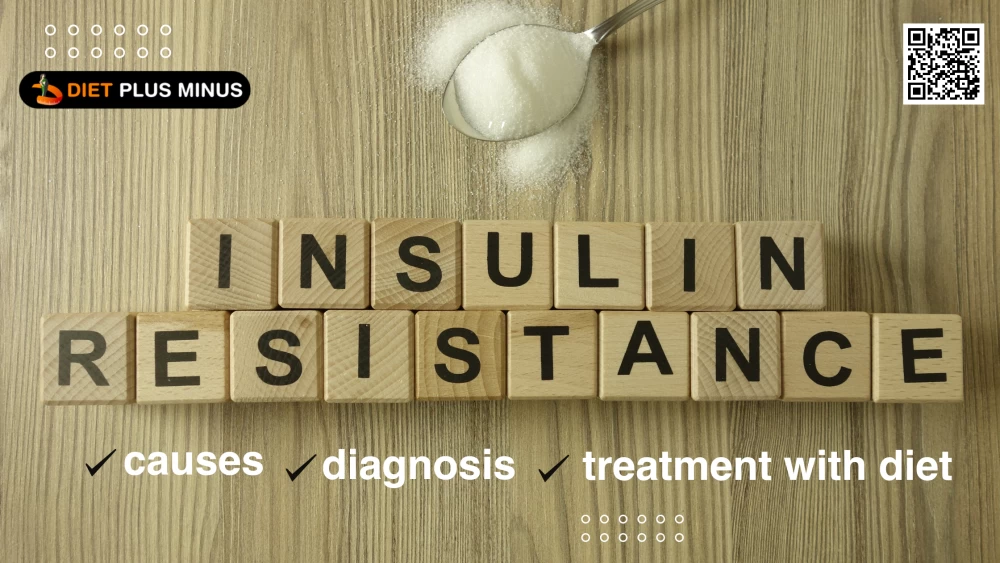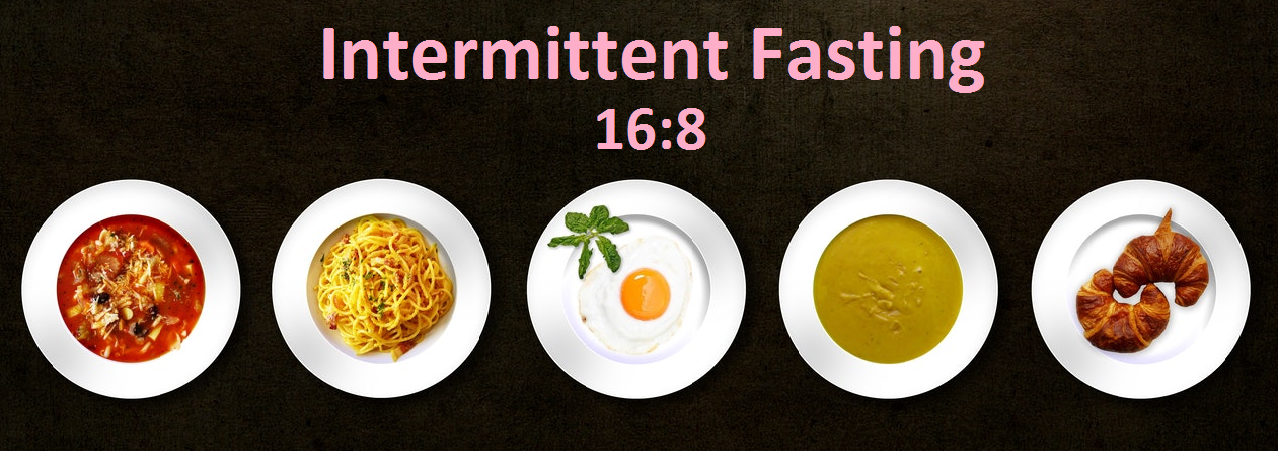
- 5th March 2021
Table of Contents
- Insulin Resistance - causes, diagnosis, treatment with diet
- Chief vulnerable of insulin resistance are:
- Effect of insulin resistance
- Common symptoms of diabetes include
- frequent infections
- extreme thirst or hunger
- feeling hungry even after a meal
- feeling more tired than usual
- evidence in blood work
- tingling sensations in hands or feet
- increased or frequent urination
- Various tests for detection:
- Blood Sugar, HbA1c Value in Diagnosis of Prediabetes And Diabetes
- Name Of Test
- Normal Levels
- Pre-Diabetic Levels
- Diabetic
- HbA1c Test
- Under 5.7%
- 5.7%- 6.4%
- 6.5% and above
- Fasting Blood Glucose Test
- Under 100 mg/dL
- 100- 125 mg/dL
- 126 mg/dL and above
- Glucose Tolerance Test
- Under 140 mg/dL
- 140-199 mg/dL
- 200 mg/dL and above
- When you should get tested:
- Your doctor may suggest for diabetes test at a younger age, if:
- have a sedentary lifestyle
- have high blood pressure (140/90 mm Hg or above)
- have had strokes
- have a low good cholesterol (HDL) level or high triglyceride levels
- have a parent or sibling with diabetes
- had a baby who weighed more than 9 pounds
- have symptoms of insulin resistance
- were diagnosed with gestational diabetes
- Preventing insulin resistance problems:
- Some efficient ways to lower your insulin levels
- Target/Intervention and Their Effect on Body
- Target/Intervention and Their Effect on Body
- Intervention
- Effect of Taking Positive Intervention
- Lose visceral or abdominal fat
- Leave sedentary behavior
- Regular exercise
- Start a low-carb diet
- Keep yourself away from refined carbs
- Avoid sugar
- Add apple cider vinegar
- Add cinnamon to food and beverages
- Increase soluble fiber intake
- Drink green tea
- Eat fatty fish
- Get protein in the right amount and of the right type
- Consuming adequate protein at meals can be beneficial in controlling your weight and insulin levels.
- Keep control of portion size
- Intermittent fasting
- Dietary tips to handle insulin resistance
- Choose whole and unprocessed food and avoid highly processed and refined foods.
- Highly processed foods digest very quickly and can spike blood sugar levels. This puts extra stress on the pancreas to make insulin.
- Your body is blocking the insulin from working efficiently to lower blood sugar levels.
- Besides whole and unprocessed food also replace saturated fat with healthy unsaturated fat.
- Foods with their categories are beneficial for people having insulin resistance:
- List of food recommended for a person suffering from insulin resistance
- Food Ingredients
- Examples
- Vegetables
- Fruits
- Dairy
- Whole grains
- Beans & legumes
- Fish
- Poultry
- Other lean protein
- Healthy fats
- Vegetables are low in calories and high in fiber, making them beneficial for blood sugar management. Always select fresh, low sodium canned or frozen vegetables.
- Always choose fresh or frozen fruits. Before selecting canned fruits, check for added sugar.
- Choose lower-fat, unsweetened milk and yogurt. Skip whole milk and full-fat yogurts.
- Whole-grain foods are fine for people with insulin resistance, as they are rich in Vitamins, fiber, and minerals.
- Fish loaded with omega-3 fatty acids are very good for people with heart disease, often associated with diabetes.
- Always select fat that is healthy and unsaturated.
- Share your idea, and question, and answer with like-minded people.
- Join our weight loss forum and ask questions there.
- Useful Links:
- How To Get Enrolled? I Register/log in I Blog I Subscription Plans I Calculator I Exercises I All Testimonials I Before and After I Recipe I Amazon Pantry I Shop with Amazon I Amazon Daily Deals I Facebook I Twitter I Linkedin I Youtube
Insulin Resistance - causes, diagnosis, treatment with diet
Insulin resistance increases the risk of type2 diabetes in you. You may be insulin resistant for years without knowing. So, your doctor must regularly check your blood glucose levels.
According to American Diabetes Association (ADA), up to 50 % of people with insulin resistance and prediabetes will develop type2 diabetes if they don’t make lifestyle changes.
Chief vulnerable of insulin resistance are:
-
Overweight people
-
People with high triglycerides levels
-
People having elevated blood pressure
Some people with insulin resistance may develop a skin condition known as acanthosis nigricans, which appears as dark, velvety patches often on the backs of the neck, groin, and armpits.
Effect of insulin resistance
If you have prediabetes, consult your doctor.
Common symptoms of diabetes include
-
frequent infections
-
extreme thirst or hunger
-
feeling hungry even after a meal
-
feeling more tired than usual
-
evidence in blood work
-
tingling sensations in hands or feet
-
increased or frequent urination
If you don’t have these obvious symptoms, your doctor can usually detect insulin resistance, prediabetes, or diabetes with a blood draw.
Various tests for detection:
There are various tests to check the level of glucose in the blood. One way to diagnose prediabetes or diabetes is with an HbA1c test, which measures your average blood sugar over the previous two to three months.

A fasting blood glucose test shows your fasting blood sugar level, done after not eating or drinking for at least eight hours. For this test, initially, your blood glucose level is determined. Then you will receive a premeasured sugary drink and your blood glucose level is checked again in two hours.
Name Of Test |
Normal Levels |
Pre-Diabetic Levels |
Diabetic |
HbA1c Test |
Under 5.7% |
5.7%- 6.4% |
6.5% and above |
Fasting Blood Glucose Test |
Under 100 mg/dL |
100- 125 mg/dL |
126 mg/dL and above |
Glucose Tolerance Test |
Under 140 mg/dL |
140-199 mg/dL |
200 mg/dL and above |
When you should get tested:
Ideally testing for diabetes begins at age of 40 but, your doctor will test you at your annual physical exam or preventive screening.
Your doctor may suggest for diabetes test at a younger age, if:
-
have a sedentary lifestyle
-
have high blood pressure (140/90 mm Hg or above)
-
have had strokes
-
have a low good cholesterol (HDL) level or high triglyceride levels
-
have a parent or sibling with diabetes
-
had a baby who weighed more than 9 pounds
-
have symptoms of insulin resistance
-
were diagnosed with gestational diabetes
Children or teens between 10-18 years may also be recommended for diabetes tests if overweight or have more than 2 above risk factors for diabetes.
Preventing insulin resistance problems:
If you are pre-diabetic, you must exercise for 30 minutes per day at least 5 days a week. Lose weight, if overweight or obese. Eat a balanced diet.
Making good lifestyle changes is the best way to keep your blood glucose levels in the desired range.
Some efficient ways to lower your insulin levels
Insulin is an extremely important hormone that’s produced by your pancreas. Here are a few tips; you can do to lower your insulin levels:
Target/Intervention and Their Effect on Body |
|
Intervention |
Effect of Taking Positive Intervention |
Lose visceral or abdominal fat |
Too much fat around your abdomen promotes inflammation and insulin resistance. Losing visceral fat can increase insulin sensitivity and may help you in reducing your insulin levels. |
Leave sedentary behavior |
To reduce insulin, it’s important to live an active lifestyle. Avoid prolonged sitting and increase the amount of time you spend walking or doing other moderate activities. It can reduce your insulin levels. |
Regular exercise |
Engage yourself in aerobic exercise, strength training, or a combination of both. It may help increase insulin sensitivity and lower your levels. |
Start a low-carb diet |
You should start a low-carb diet. This diet has been shown to increase insulin sensitivity and reduce insulin levels in people with obesity, diabetes, metabolic syndrome, and PCOS. |
Keep yourself away from refined carbs |
Replace refined carbs with slower-digesting whole foods. You will be able to reduce your insulin levels. |
Avoid sugar |
Sugar is the most important food to stay away from if you’re trying to lower your insulin levels. A high intake of sugar in any form can increase your insulin levels and also insulin resistance. |
Add apple cider vinegar |
Apple cider vinegar has been shown to prevent insulin and blood sugar spikes after eating. |
Add cinnamon to food and beverages |
Cinnamon is a delicious spice loaded with antioxidants. Studies show that adding cinnamon to foods or beverages lowers insulin levels and increases insulin sensitivity. |
Increase soluble fiber intake |
Soluble fiber provides several health benefits, including weight loss and reducing blood sugar levels. |
Drink green tea |
It has been shown in several studies that green tea may increase insulin sensitivity and decrease insulin levels. |
Eat fatty fish |
The long-chain omega-3 fatty acids found in fatty fish help in reducing insulin resistance and insulin levels. |
Get protein in the right amount and of the right type |
Consuming adequate protein at meals can be beneficial in controlling your weight and insulin levels. |
Keep control of portion size |
Although, the pancreas releases different amounts of insulin depending on the type of food you eat, eating too much of any food at one time can lead to hyper-insulinemia. So, always keep control of portion size. |
Intermittent fasting |
Although intermittent fasting is very beneficial for weight loss but can also help reduce your insulin levels. However, this may not suit everyone. |
Insulin resistance is an early warning sign. With the intervention of healthy lifestyle choices, regular exercise, and a balanced diet, you may be able to prevent diabetes.
Dietary tips to handle insulin resistance
-
Choose whole and unprocessed food and avoid highly processed and refined foods.
-
Highly processed foods digest very quickly and can spike blood sugar levels. This puts extra stress on the pancreas to make insulin.
-
Your body is blocking the insulin from working efficiently to lower blood sugar levels.
-
Besides whole and unprocessed food also replace saturated fat with healthy unsaturated fat.
Foods with their categories are beneficial for people having insulin resistance:
Food Ingredients |
Examples |
Vegetables |
Tomatoes |
|
|
Asparagus |
|
|
Greens such as spinach, collards, cabbage, and kale |
|
|
Colorful peppers |
|
|
Carrots |
|
|
Cruciferous vegetables such as broccoli, cauliflower, and brussels sprouts |
|
|
Green beans |
Fruits |
Apples |
|
|
Plums |
|
|
Grapes |
|
|
Berries |
|
|
Peaches |
|
|
Bananas |
Dairy |
Rice milk |
|
|
Coconut milk |
|
|
Unsweetened milk |
|
|
Low-fat milk |
|
|
Unsweetened yogurt |
|
|
Low-fat yogurt |
Whole grains |
Brown rice |
|
|
Whole-grain barley |
|
|
Whole wheat or stone-ground whole grain |
|
|
Whole-grain corn or cornmeal |
|
|
Whole rye |
|
|
Whole oats and oatmeal |
|
|
Bulgur |
|
|
Wild rice |
|
|
Whole farro |
|
|
Quinoa |
|
|
Millet |
|
|
Buckwheat |
Beans & legumes |
Pinto |
|
|
Lima |
|
|
Red and black beans |
Fish |
Salmon |
|
|
Sardines |
|
|
Rainbow trout |
|
|
Mackerel |
|
|
Herring |
|
|
Tuna |
|
|
Crabs |
|
|
Clams |
|
|
Lobster |
|
|
Oysters |
|
|
Shrimp |
|
|
Scallops |
Poultry |
Chicken breasts |
|
|
Turkey |
|
|
Cornish hen |
Other lean protein |
Pork tenderloin |
|
|
Veal loin |
|
|
Lamb chops, roasts, or legs |
|
|
Lean beef |
|
|
Soy |
|
|
Tempeh |
|
|
Tofu |
|
|
Legumes |
|
|
Beans |
Healthy fats |
Avocados |
|
|
Olives |
|
|
Flax seeds |
|
|
Walnuts |
-
Vegetables are low in calories and high in fiber, making them beneficial for blood sugar management. Always select fresh, low sodium canned or frozen vegetables.
-
Always choose fresh or frozen fruits. Before selecting canned fruits, check for added sugar.
-
Choose lower-fat, unsweetened milk and yogurt. Skip whole milk and full-fat yogurts.
-
Whole-grain foods are fine for people with insulin resistance, as they are rich in Vitamins, fiber, and minerals.
-
Fish loaded with omega-3 fatty acids are very good for people with heart disease, often associated with diabetes.
-
Always select fat that is healthy and unsaturated.
Share your idea, and question, and answer with like-minded people.
Join our weight loss forum and ask questions there.





